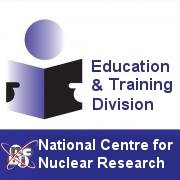BP2 achievements 2013-16: search for dark matter and “new” physics
Within the 2013-2016 period the BayesFITS team focussed its research attention on analyses of a wide range of experimental data acquired at LHC and in the dark matter experiments, striving to identify any signs of the so-called ”new physics”. The Bayesian statistics, a novel approach applied in those analyses, was used to correctly calculate probabilities of various theoretical models. The BayesFITS code, an advanced software tool, and a methodology to calculate probabilities for data from LHC/dark matter experiments were developed to automate the analyses.
Scientific output of the team includes 36 papers published in leading scientific journals (JHEP, JCAP, PRD), a couple of plenary session lectures given at international conferences, several orals given on other conference sessions, and numerous invited seminars. The most significant achievements of the team include:
- Determining the impact of the Higgs boson discovery (July 2012) on the permitted space of parameters of supersymmetric models looked to unify fundamental interactions. The paper with those results [1] was among the first published global analyses of such models; it is still regarded as a standard, as evidenced by a steadily growing number of citations. The most significant results of the analysis include a supposition that supersymmetric particles may be heavier than previously expected, with considerable consequences for dark matter properties. In subsequent papers [2,3] it was shown that the best fit to the experimental data is given by models, in which dark matter is a supersymmetric particle of a mass around 1 TeV.
- Drawing attention to the fact that complementarity of data from various experiments is very important if the permitted space of parameters of supersymmetric models is to be thoroughly tested. In particular it was shown that the part of the parameter space remaining out of LHC reach will be thoroughly tested in dark mater experiments planned for the coming years [3,4].
- Determining (in close cooperation with experimental physicists) a probability function capable to correctly describe the experimental data. A software tool capable to interpret experimental results in arbitrary supersymmetric model was developed for LHC. In cooperation with the CTA collaboration, the predicted reach of experiment into supersymmetric models was analysed. These results were later used in some official materials of the collaboration [5].
- Predicting from experimental data some basic properties of dark matter (mass and force of interaction with nuclear matter) not assuming any particular dark matter model [6].
TMEX 2013, the first Theory Meets Experiment cycle symposium, and COSMO 2015, a large international conference, were also organizational achievements of the team.
Numerical tools and research methodology developed within framework of the project may easily be expanded to cover data acquired in subsequent experiments and “new physics” models other than supersymmetry.
[1] The CMSSM Favoring New Territories: The Impact of New LHC Limits and a 125 GeV Higgs, A. Fowlie, M. Kazana, K. Kowalska, S. Munir, L. Roszkowski, E. Maria Sessolo, S. Trojanowski, Y.-L. Sming Tsai, Phys. Rev. D86 (2012) 075010.
[2] Two ultimate tests of constrained supersymmetry, K. Kowalska, L. Roszkowski, E. Maria Sessolo, JHEP 1306 (2013) 078
[3] Low fine tuning in the MSSM with higgsino dark matter and unification constraints, K. Kowalska, L. Roszkowski, E. Maria Sessolo, S. Trojanowski, JHEP 1404 (2014) 166.
[4] What next for the CMSSM and the NUHM: Improved prospects for superpartner and dark matter detection, L. Roszkowski, E. Maria Sessolo, A. J. Williams, JHEP 1408 (2014) 067
[5] Prospects for dark matter searches in the Pmssm, L. Roszkowski, E. Maria Sessolo, A. J. Williams, JHEP 1502 (2015) 014
[6] Reconstructing WIMP properties through an interplay of signal measurements in direct detection, Fermi-LAT, and CTA searches for dark matter, L. Roszkowski, E. Maria Sessolo, S. Trojanowski, A. J. Williams, JCAP 1608 (2016) no.08, 033












